Gent occupies first place in the Belgian Pro League with 14 points from six matches, with a difference of three goals from Anderlecht, the second, but in seven games.
One of Gent’s most important points of power this season is their excellence in set-pieces, particularly attacking corners, as they are the team that scored the most goals from corners in the Belgian Pro League with four goals, equal with Club Brugge.
In order to understand the impact of the attacking corners on Gent, we should know that the team scored four goals from corners out of a total of 12 goals, with a percentage of 33%, while Club Brugge scored four goals from corners out of a total of 19 goals, with a percentage of 21%. This means that the corners have a more significant effect on Gent, despite playing only six matches, unlike Club Brugge, who played seven matches.
In this tactical analysis, we will discuss the reasons for Gent’s superiority in corners and their varied and different tactics, which helped them to lead the Belgian Pro League.
Far runners
They prefer to make three runners, at least, start on the edge of the box, and then they run to the box when the taker moves. This trick gives them many advantages according to the opponent’s reaction, and this is their point of power, as we will see below.
In the first photo, the opponent defends with five zonal players in zonal marking, highlighted in red; two players in man-marking, highlighted in green; two short-option defenders; and a rebound player. In the second photo, our three far runners, have a numerical superiority against their markers, in green, in a 3v2 situation, so they can easily manipulate these two defenders to free one of them, who is the red-highlighted player who targets the red area, as shown in the third photo.
In the same third photo, the targeted player comes free from marking, having a dynamic superiority over the zonal defenders because he comes from a far area, jumping from movement, but to make sure that he will get the ball, the attacker moves to drag the zonal defender.
In contrast, the attacker moves behind the defender to attract his attention, preventing him from stepping forward to get the ball. Still, the intelligent defender let him move to the cross, as shown in the fourth photo. Still, the ball hits his back to reach the attacker on the far post.
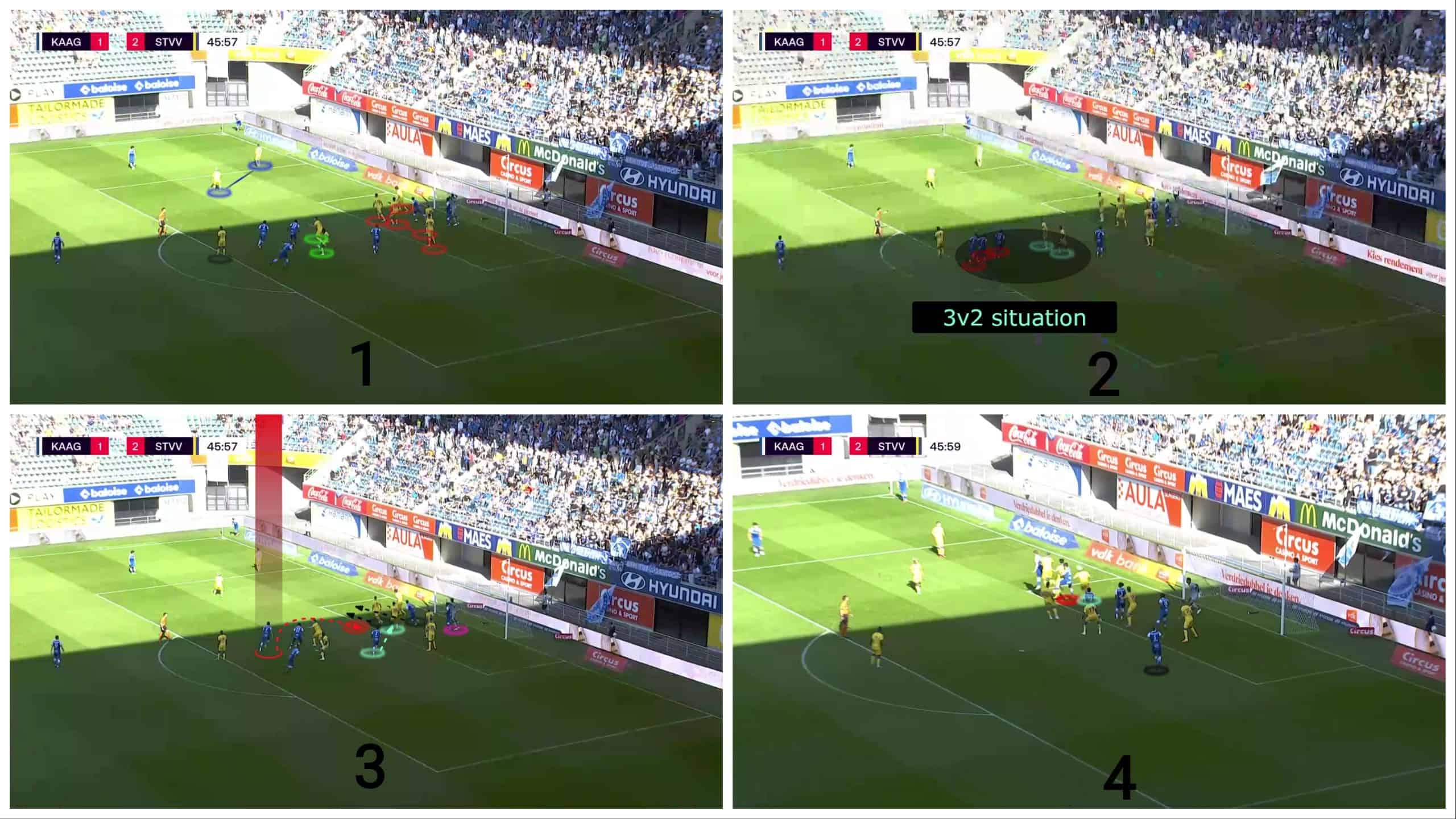
He kicks the ball above the crossbar, as shown below.
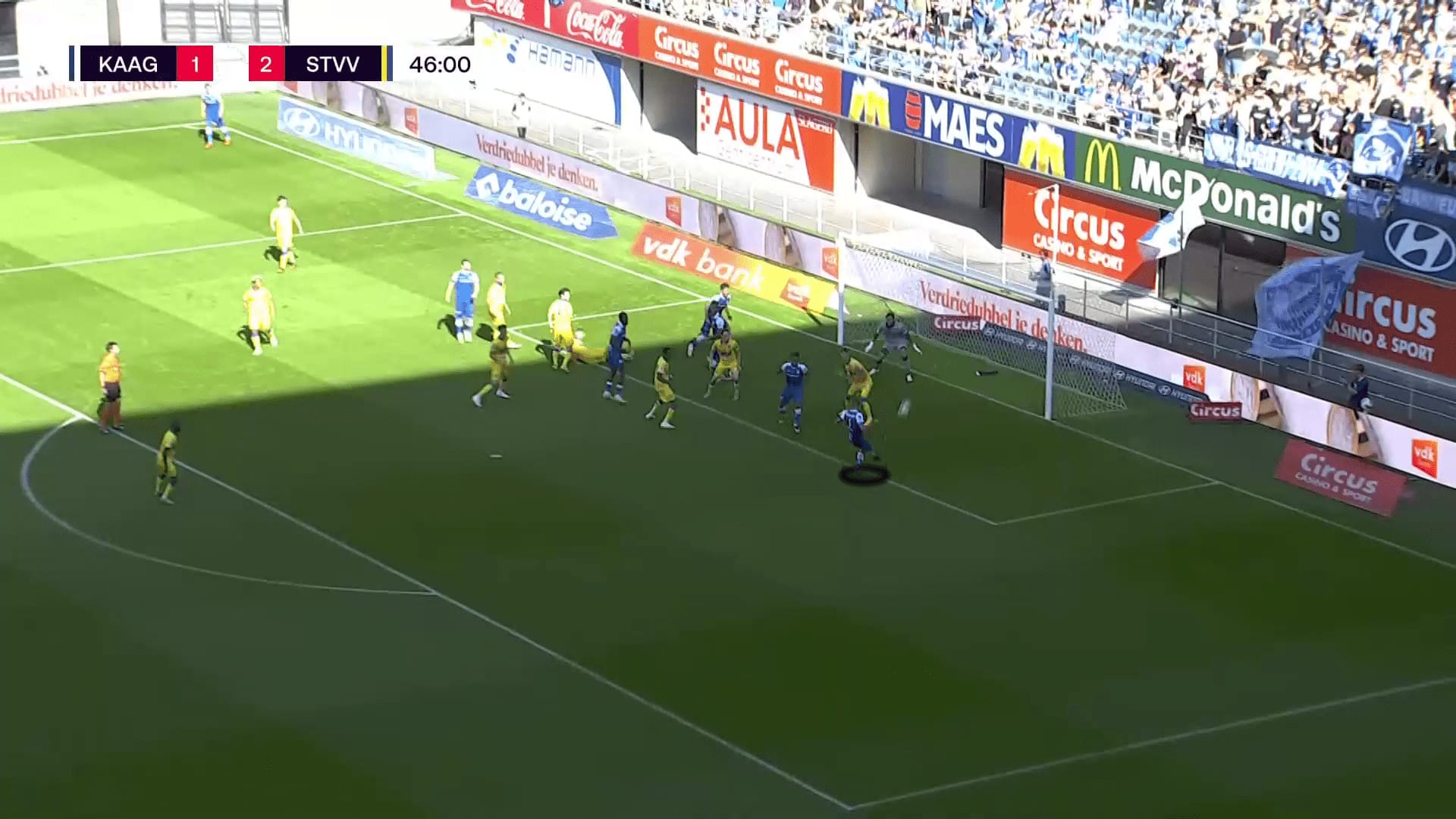
One of their strengths is that they can deal with different defensive reactions, so they have no problem when the opponent decides to dispense the rebound defender to put three man-markers against their three far runners who come from movement far away from the zonal line, as shown in the first photo.
In the second photo, the three man-markers in the circle move to the near post to empty the space for the rebound player in green, as shown in the third photo, but the cross is a little far, so the shot goes outside the pitch, as shown in the fourth photo.
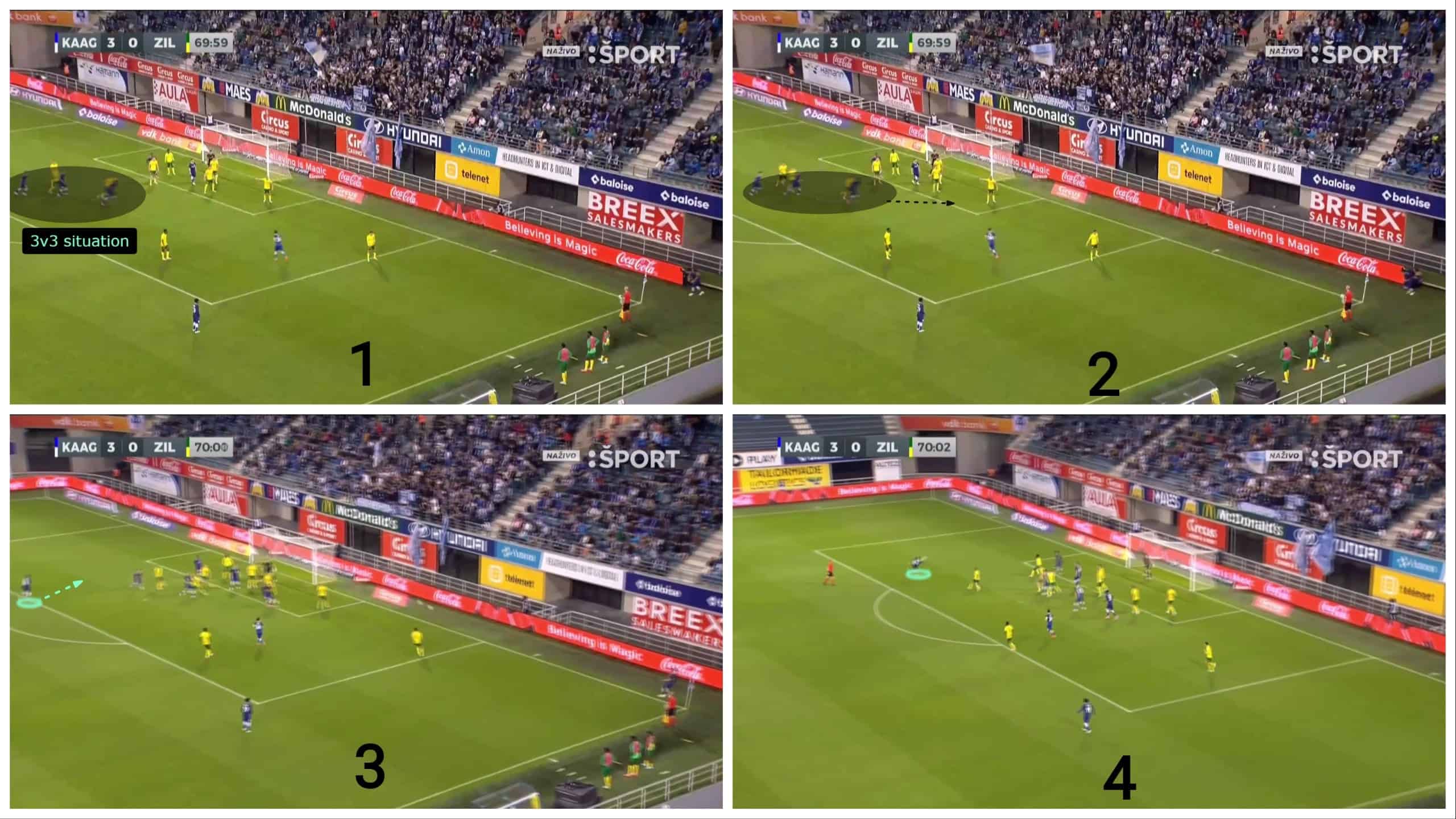
Here, the opponent decides to make the two players in red, as a second zonal line, to be near the first line in a tight area, waiting for the runners near the penalty spot, not tracking them from the first.
In the first photo, the opponent defends with five players in the first zonal line in green, two players in the second zonal line, a rebound defender, and two short-option defenders.
In the second photo, it is clear that there are only three attackers in the box, in green, while the other three, out of shot, move after the taker’s movement.
In the third photo, the attacker whose initial position was in the box, runs toward the last zonal defender to prevent him from moving forward to face our targeted player.
In contrast, the attacker blocks the goalkeeper, and the other third stands in the circle with the two far runners to block the three defenders, two second-line zonal defenders and the rebound defender to empty the space from the attacker.
In the fourth photo, the three blocks are shown in the circle to prevent the three defenders from stepping back toward the targeted player, highlighted in red.
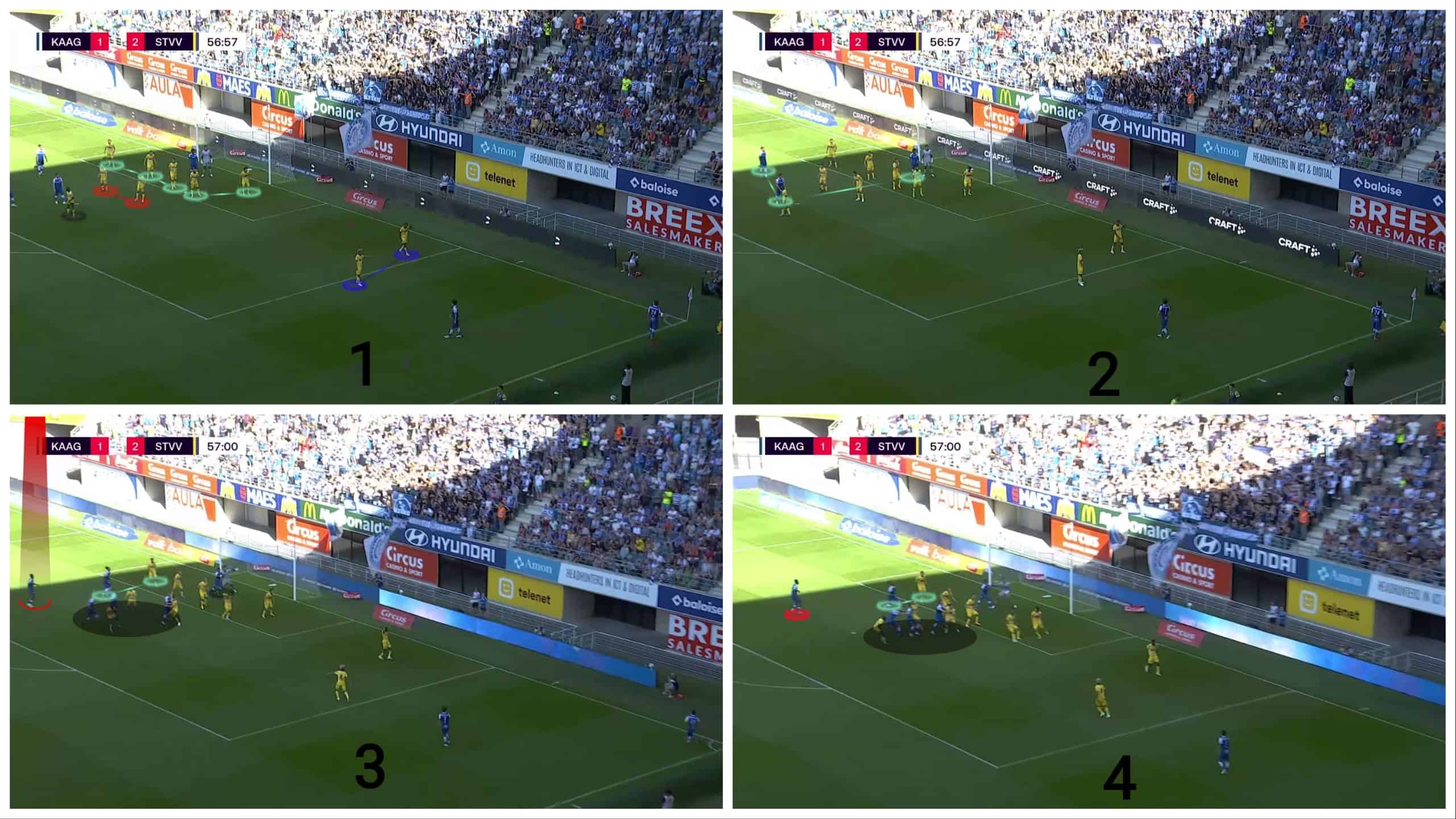
The targeted attacker gets the ball easily, resulting in a goal, as shown in the following two photos.
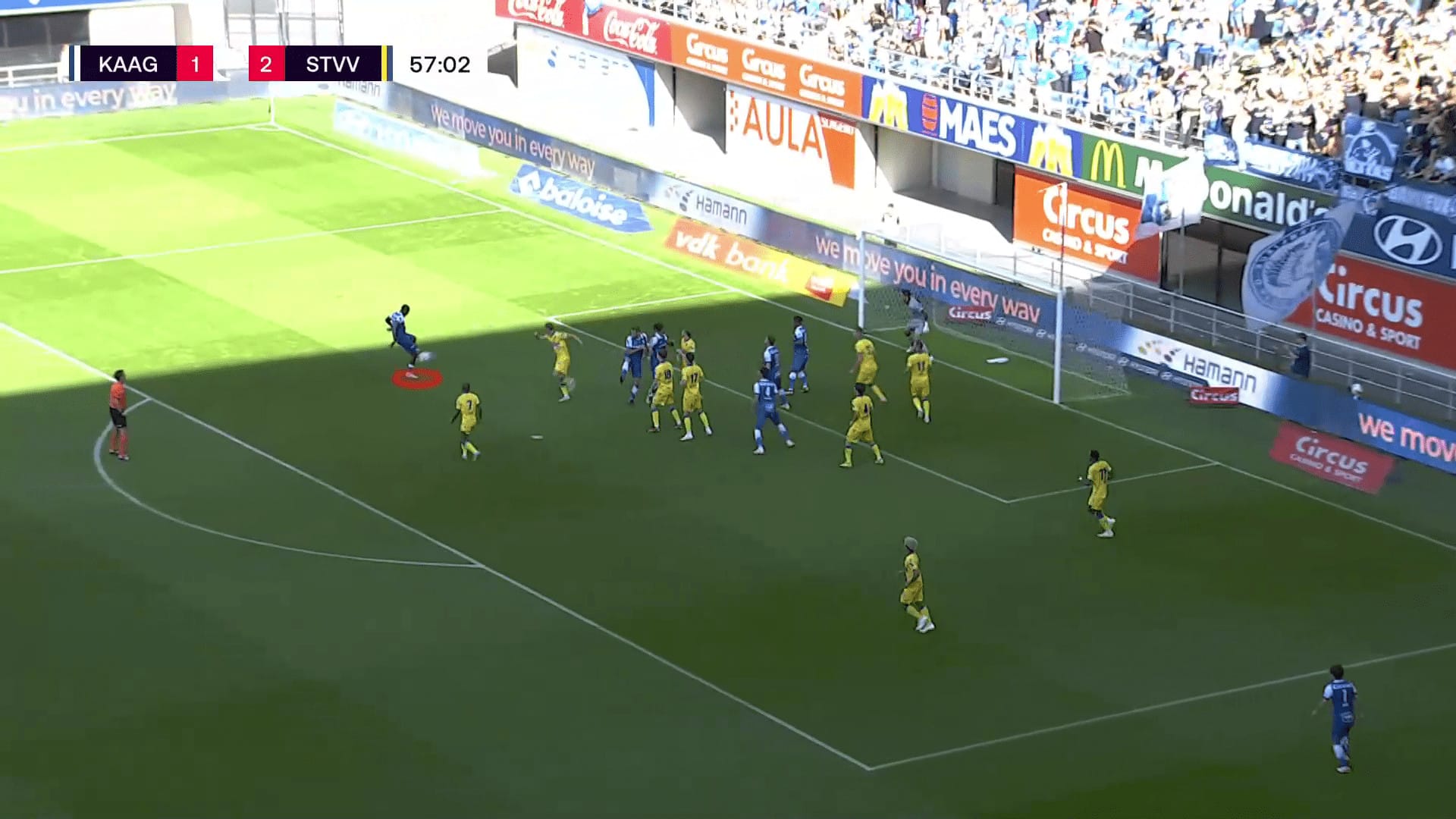
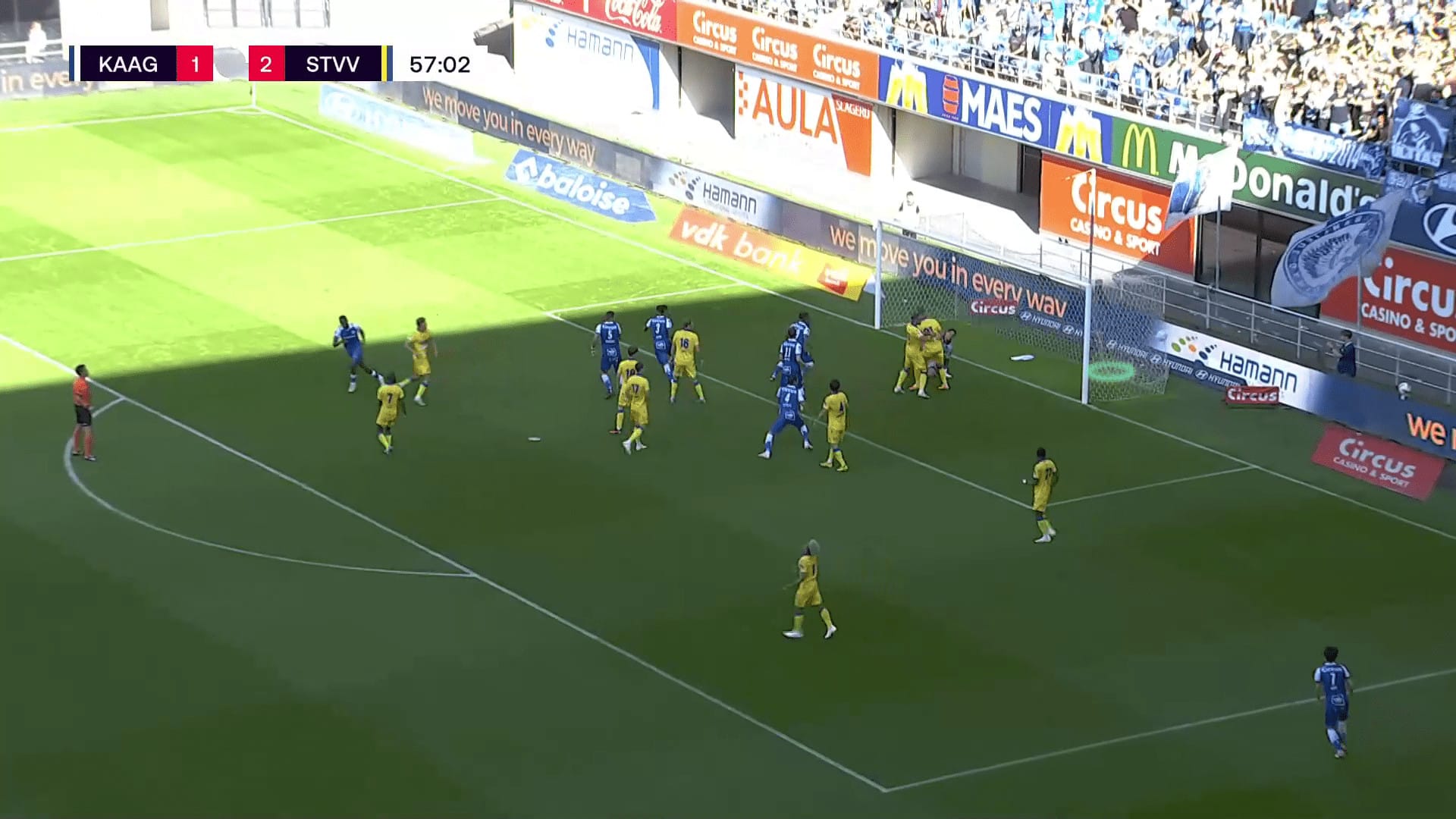
Against the second-zone defensive idea, they also have a good idea, called a second-zone fence, making the runners block the second zonal line to empty the space in front of it.
In the first photo, the three forerunners move widely to prevent the three second-line zonal defenders from moving forward to the late runner, the targeted player, as shown in the second photo.
In the third photo, the runner gets the ball, but the headed shot goes over the crossbar, as shown in the fourth photo.
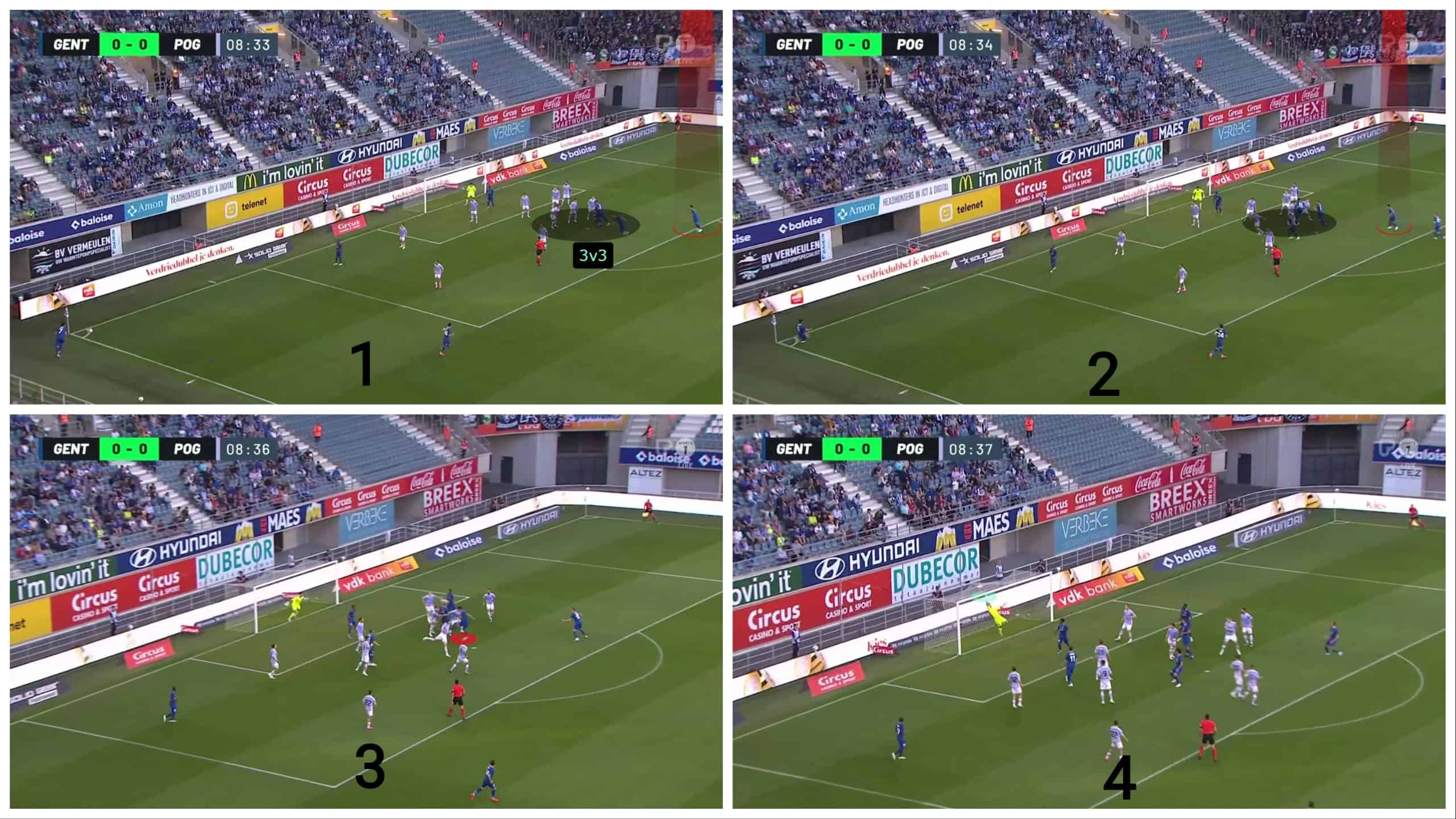
Short corners
We are still in the idea of the far and late runners, but with a different shape: the short corner. In the first photo, they exploit that the opponent defends with only one player against the short corner, so they put two players in green as short options while the three late runners fix the rebound defender.
In the second photo, the taker passes the ball directly to the green player, who targets the player whose initial position is the nearest to the near post. Still, he will move in a curved path at the far post.
At the same time, the other two late runners block the defenders who try to turn back to get him, as shown in green in the third photo, and an attacker, whose initial position was in the six-yard, blocks the last zonal defender, in pink, but the cross was a little far, as shown in the fourth photo.
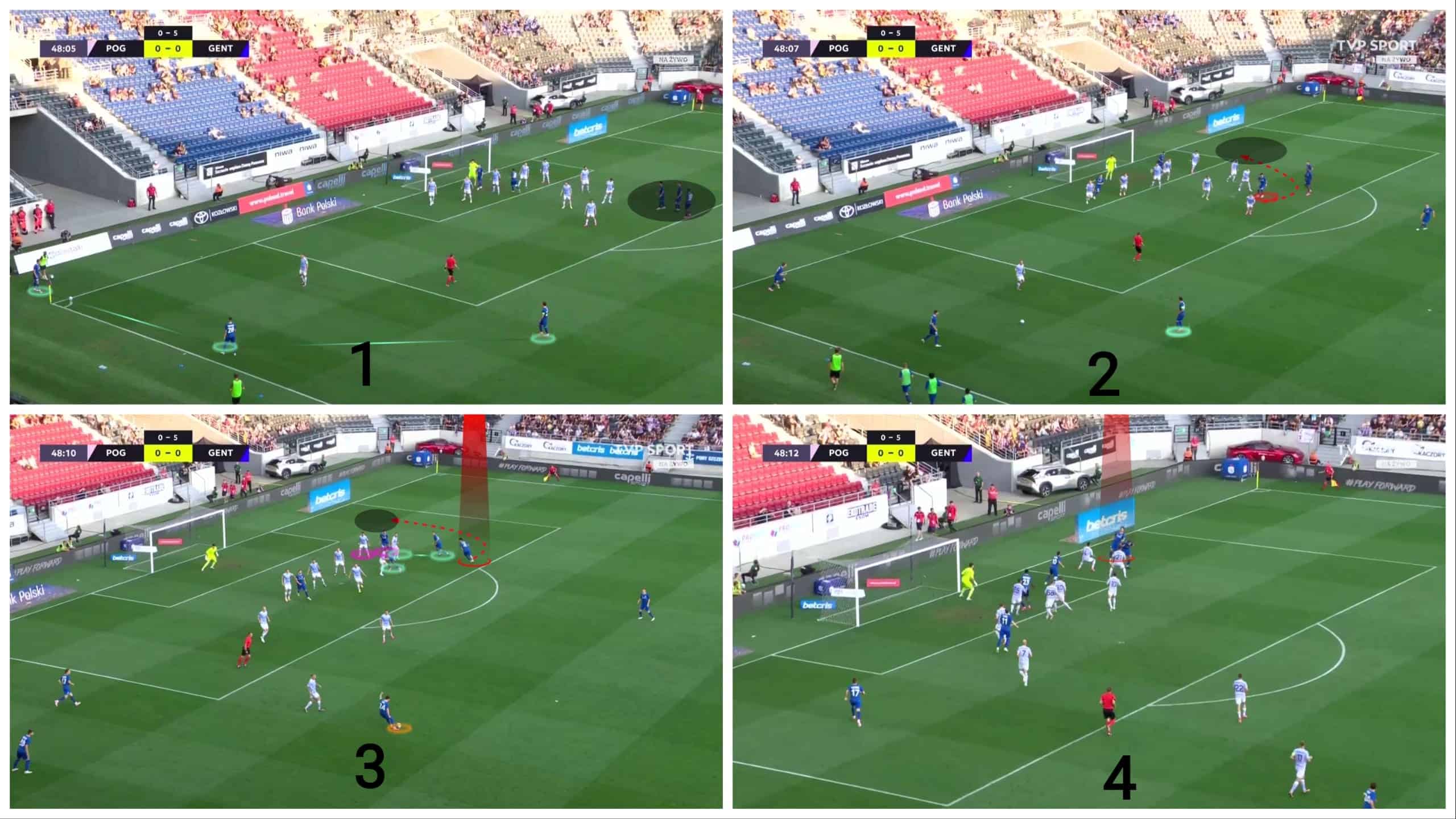
Flicks
They also have a repeated pattern, using two players behind the first zonal line; one moves from the near-post defender’s blind side to flick the ball and the other blocks the goalkeeper, then moves back to receive the headed pass.
In the first photo, the opponent defends with four defenders in the first zonal line, in green, a yellow player in front of them to defend the flick and help the two short defenders and three man-markers, highlighted in red.
In the second photo, as we explained, the attacker blocks the goalkeeper, and the green attacker moves from the defender’s blind side to flick the ball from the targeted area.
Still, they want to make sure that defenders on the near post, numbered 1 and 2, won’t move forward to get the cross, so the three far runners carry with their markers in the white circle to the near post to fix them, as shown in the third photo.
In contrast, the attacker stepped back to receive the headed pass in an onside position, as shown in the fourth photo.
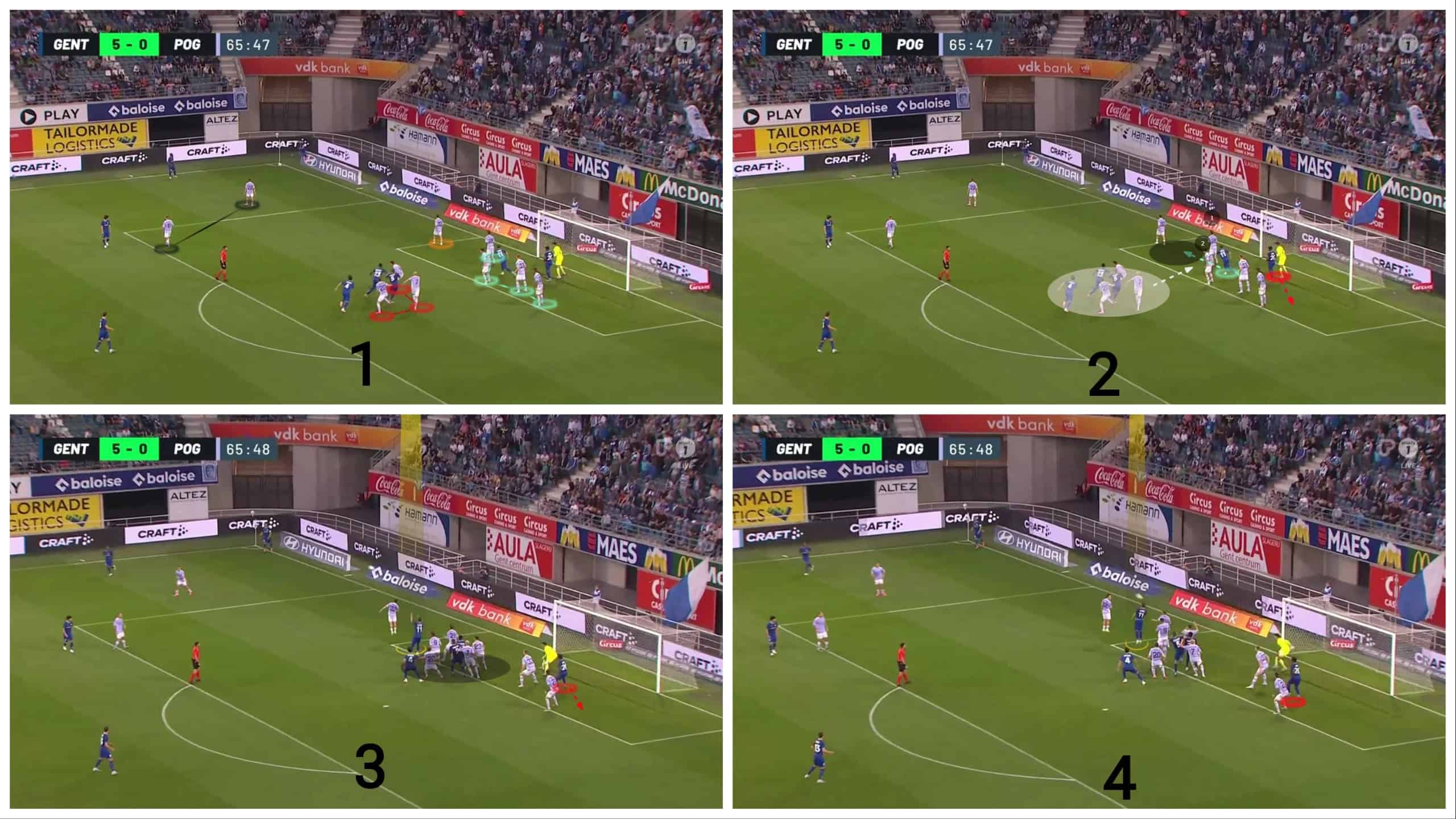
The first attacker can’t flick the ball accurately, so it goes outside, as shown below.
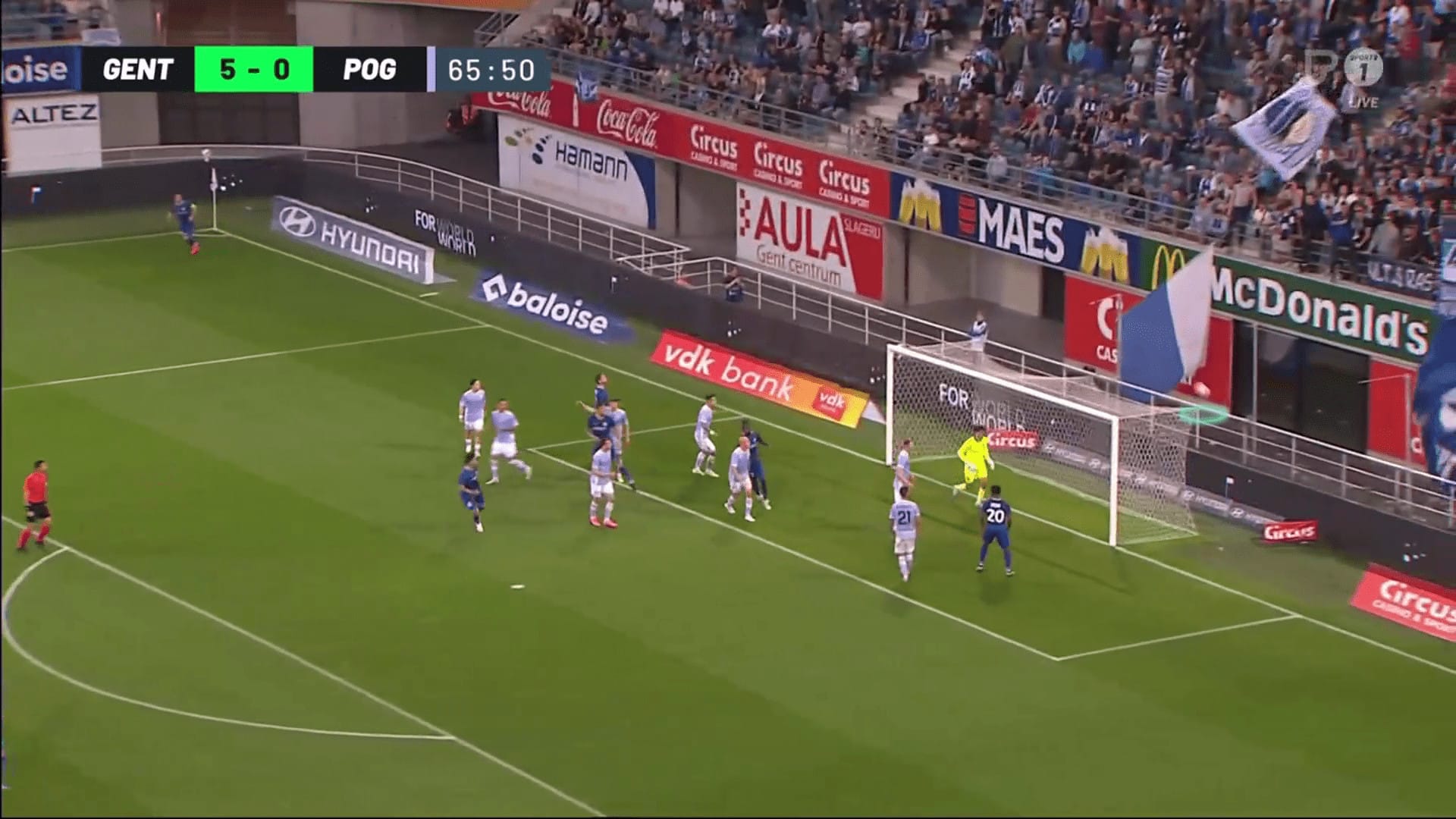
They also use the same idea, but in a different way that is called the fake flick, which is making an attacker move earlier than the near post, pretending that he aims to flick the ball, dragging the defender with him, and the cross is played behind him on the near post, as we will explain below.
In the first photo, our usual two attackers stand behind the zonal line in the circled area. In the second photo, the green attacker moves toward the zonal defender, pretending that he aims to flick the ball to drag him to make the area behind him accessible for the late runner, who is free as one of the advantages of late runners, as explained above. In contrast, the green attacker blocks the goalkeeper.
In the third photo, the plan works, so the first attacker, highlighted in blue, can get the ball quickly while the second attacker, highlighted, steps back, without marking, to be in an onside position to receive the headed pass, as shown in the fourth photo.
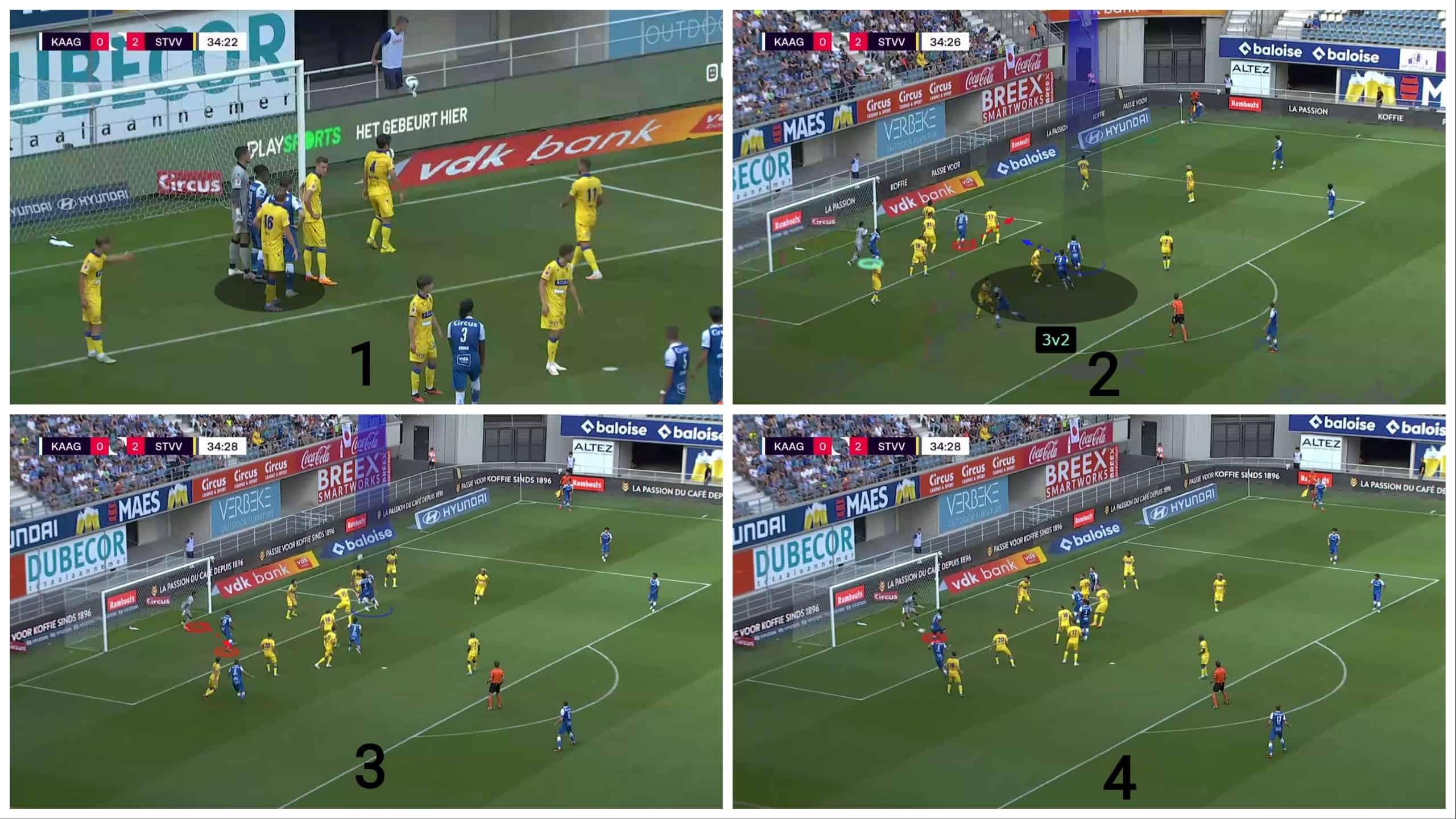
The plan works, and the result is a goal, as shown below.
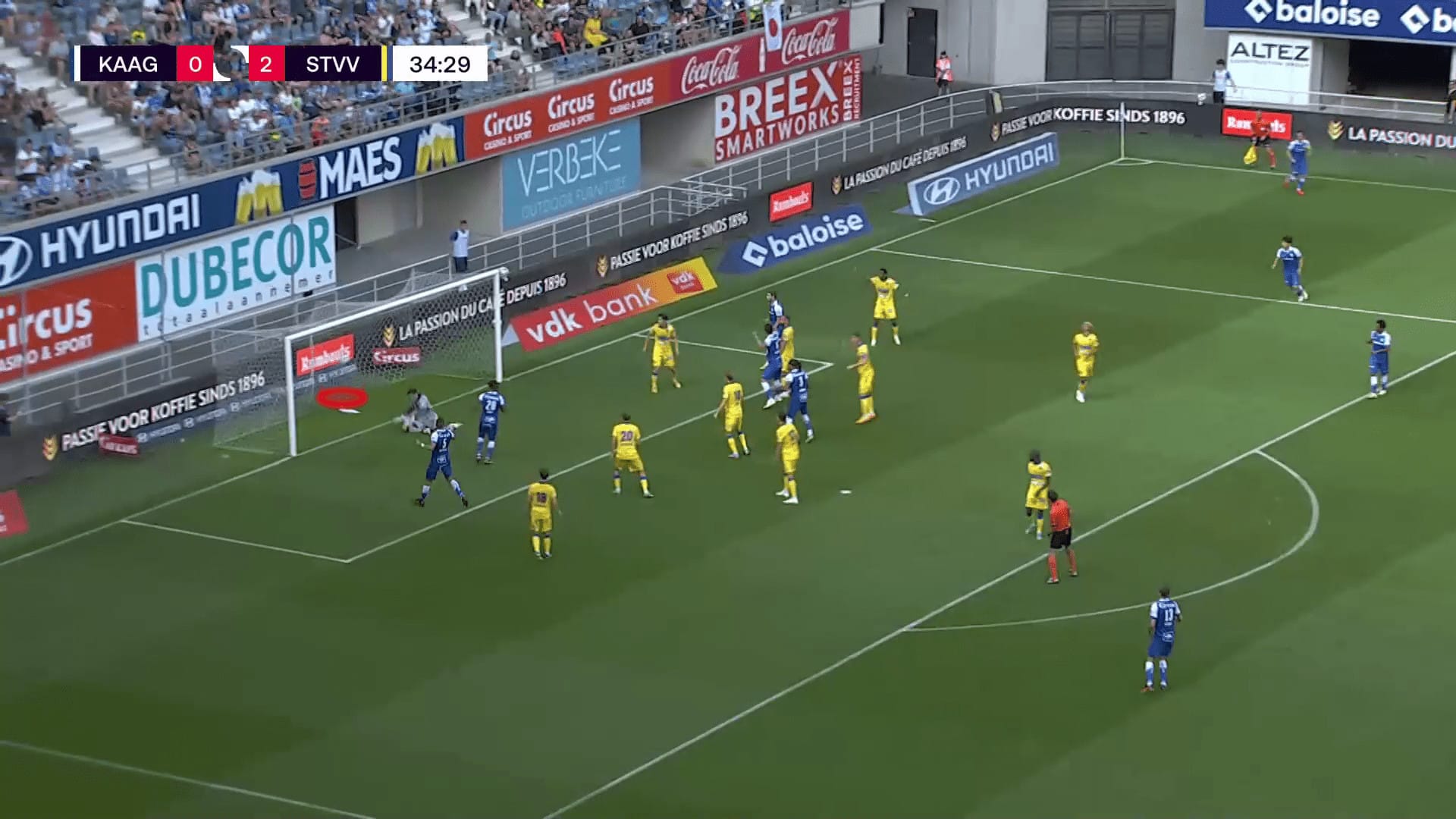
Conclusion
In this analysis, we explained the different tactics of Gent in attacking corners, which helped them to lead the Belgian Pro League, as well as clarified the extent of difference and diversity of these tactics.
In this set-piece analysis, we explained their reliance on the late and far runners who manipulate the man-to-man defenders to make one of them free or block the markers to help the rebounder player break into the area.
Gent also use flicks excellently to the player whose initial position is with the goalkeeper; sometimes, they deceive the opponent that they will do the flick to clear the space on the near post, which is called a fake flick.

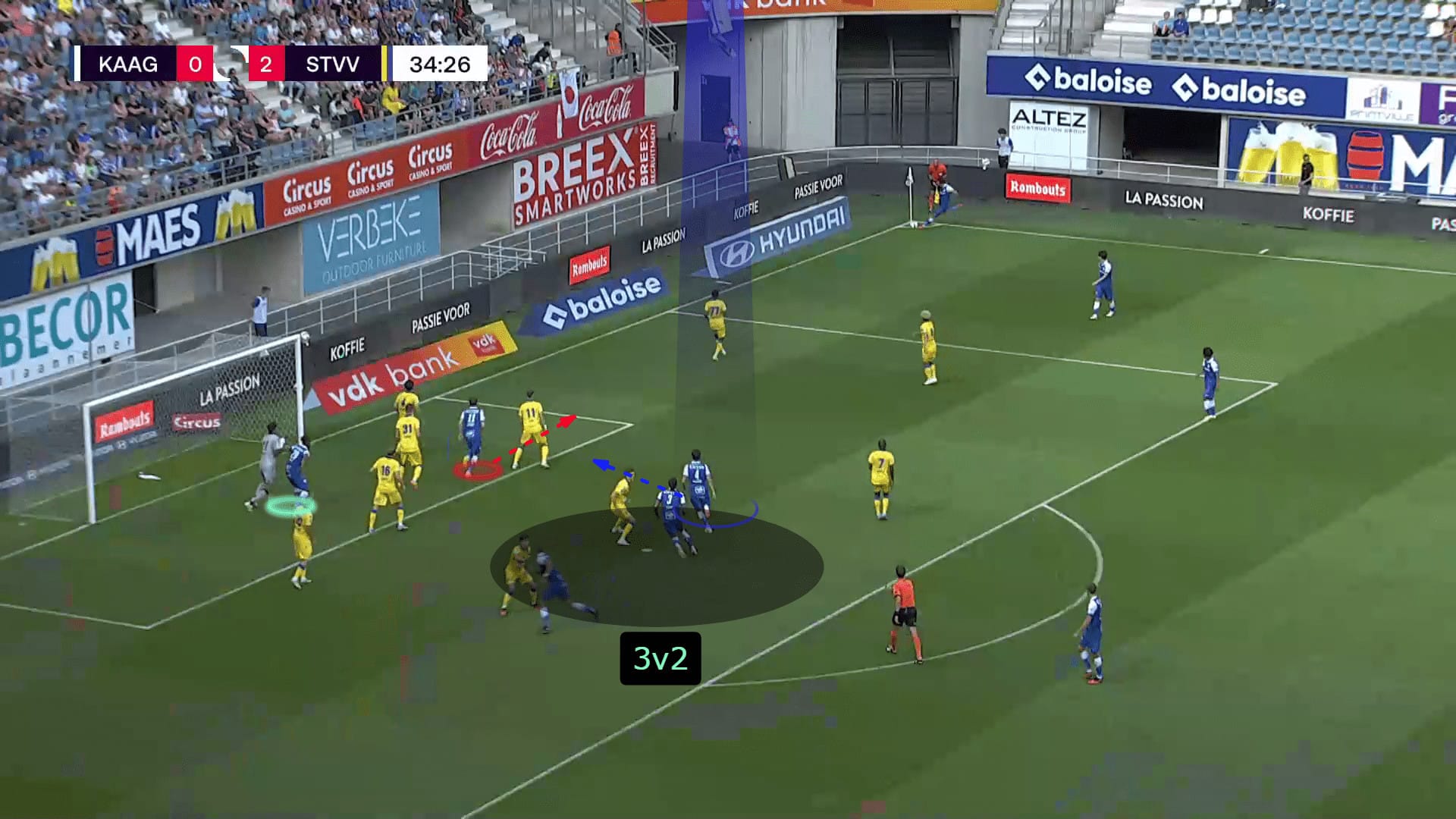




Comments